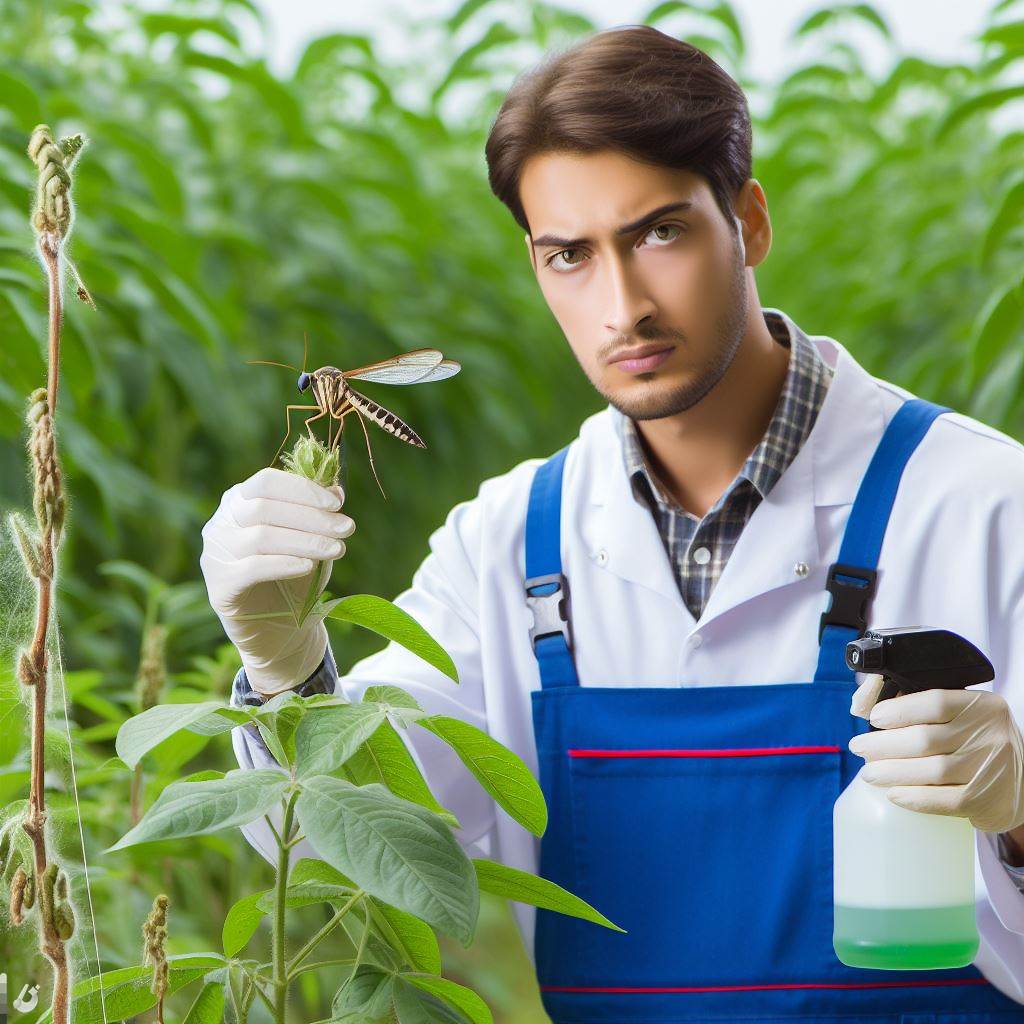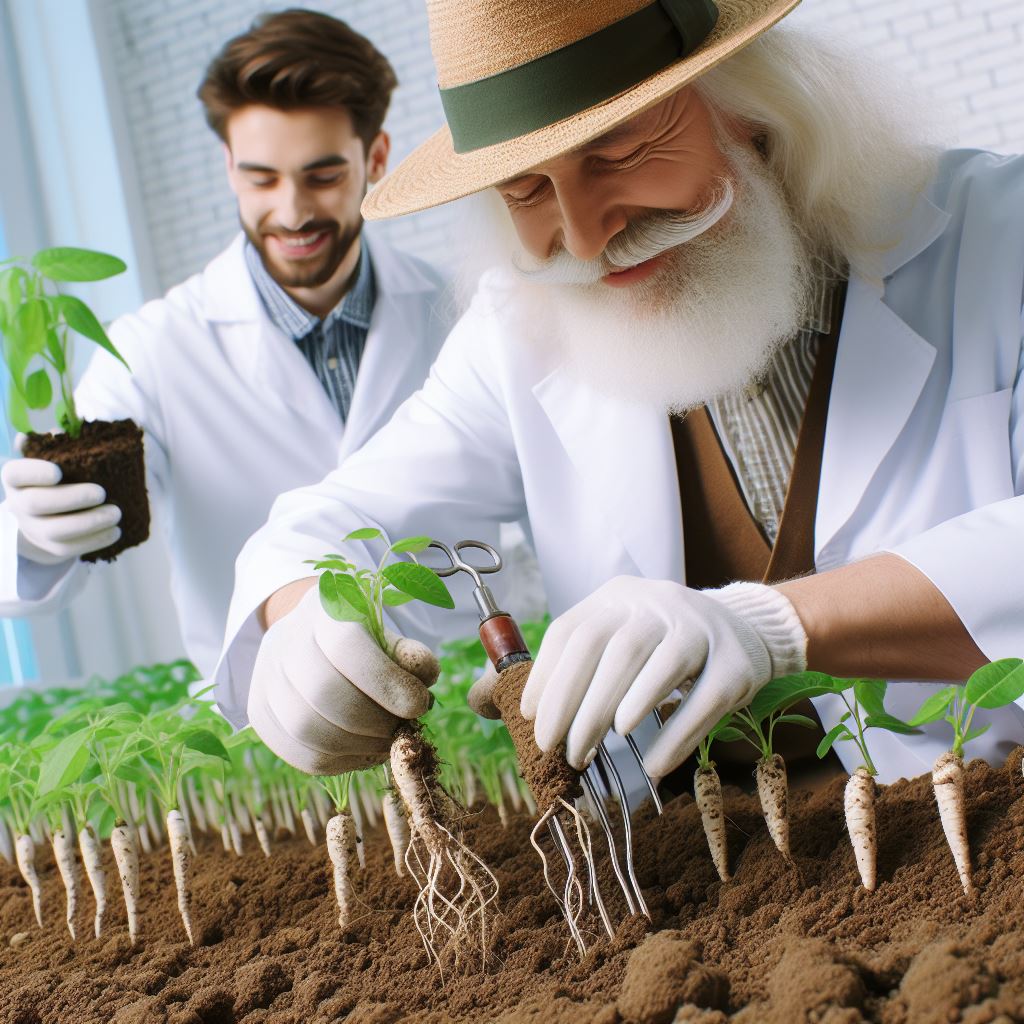Introduction
Soil conservation is the practice of preventing soil erosion and degradation. It is essential for maintaining a healthy environment and ensuring sustainable agriculture.
Soil conservation plays a crucial role in preserving natural habitats and biodiversity.
It helps prevent the loss of valuable topsoil, which contains many nutrients necessary for plant growth.
Additionally, it reduces sediment runoff into rivers and streams, improving water quality and supporting aquatic life.
Moreover, soil conservation is vital for protecting agricultural productivity.
By preventing erosion, it maintains the fertility of farmland and allows for sustainable crop production.
Without proper conservation measures, land can become unsuitable for agriculture, leading to food scarcity and economic downturns.
In this blog post, we aim to highlight the significance of soil conservation and offer practical solutions to tackle erosion effectively.
We will discuss various erosion control techniques, such as contour plowing, terracing, and conservation tillage.
Additionally, we will provide tips on implementing these methods in residential gardens to inspire readers to make a positive impact.
By spreading awareness about soil conservation, we hope to encourage individuals to take action and contribute to the preservation of our natural resources.
Together, we can ensure a sustainable future for generations to come.
Stay tuned for our upcoming posts on specific conservation practices and success stories from around the world.
Let’s join hands to tackle erosion smartly and safeguard our planet’s soil!
Read: Soil Structure: Building Blocks of Fertility
Transform Your Agribusiness
Unlock your farm's potential with expert advice tailored to your needs. Get actionable steps that drive real results.
Get StartedUnderstanding Erosion
Definition of erosion
Erosion refers to the process of the gradual wearing away or removal of soil or rock by natural forces such as water or wind.
Erosion is a significant environmental issue that requires urgent attention and effective solutions.
Understanding the causes and impacts of erosion can aid in developing smart strategies for soil conservation.
Causes of soil erosion
Water erosion
One of the primary causes of erosion is water. Rainfall and runoff can wash away vulnerable topsoil, carrying valuable nutrients away from the land.
This process not only depletes the soil’s fertility but also increases the risk of flooding and sedimentation in nearby water bodies.
Wind erosion
Another contributor to erosion is wind. Strong winds can easily blow away loose soil particles, causing barren areas and desertification.
Wind erosion is particularly prevalent in dry regions lacking vegetation cover and can severely impact agricultural productivity.
However, human activities play a significant role in accelerating erosion rates.
Deforestation, for instance, removes protective vegetation, making the soil vulnerable to erosion by water or wind.
Additionally, improper agricultural practices, such as overgrazing and excessive tilling, further degrade the soil, making it more prone to erosion.
Negative impacts of erosion
Loss of topsoil
The negative impacts of erosion are far-reaching. The loss of topsoil is detrimental to agriculture and food security.
The fertile top layer contains essential nutrients that support plant growth, and without it, crop yields decrease.
This loss also affects the stability of the soil structure, making it susceptible to compaction and further erosion.
Reduced water quality
Erosion also compromises water quality. Sediment runoff contains pollutants, such as fertilizers and pesticides, which contaminate water sources.
This pollution can harm aquatic ecosystems and negatively impact drinking water supplies for humans and animals.
Damaged ecosystem
Furthermore, erosion damages ecosystems on various levels. It disrupts natural habitats, displaces wildlife, and reduces biodiversity.
In sensitive areas like coastal regions, erosion can lead to the loss of valuable wetlands, which serve as crucial buffers against storms and provide essential habitats for numerous species.
To tackle erosion and protect our soils, it is crucial to implement effective soil conservation practices.
These may include erosion control measures like terracing, contour plowing, or the use of cover crops to prevent erosion by water or wind.
Additionally, promoting sustainable agriculture practices, reforestation, and implementing proper land management strategies can mitigate erosion and its negative impacts.
Erosion is a complex issue, but with a comprehensive understanding of its causes and consequences, we can adopt smart solutions that preserve our precious soils and ensure a sustainable future for generations to come.
Read: Permaculture Principles: Soil Health Focus
Effective Soil Conservation Techniques
Soil conservation plays a crucial role in maintaining the health and productivity of agricultural lands.
Erosion, the main culprit behind soil degradation, can be effectively tackled using various techniques.
Showcase Your Farming Business
Publish your professional farming services profile on our blog for a one-time fee of $200 and reach a dedicated audience of farmers and agribusiness owners.
Publish Your ProfileHere, we will explore some of the most effective soil conservation techniques and their benefits.
Contour plowing
- Contour plowing is a technique where furrows are constructed along the contours of the land, following its natural slope.
- This technique helps to minimize water runoff by trapping it within the furrows, reducing erosion and retaining moisture. It also improves soil fertility by preventing topsoil loss.
Strip cropping
- Strip cropping involves planting different crops in alternating strips across the field.
- This technique reduces erosion by breaking up the flow of water and wind across the field. It also enhances soil fertility and nutrient cycling by providing a diverse plant cover.
Terracing
- Terracing is a method of creating level platforms on steep slopes, resembling steps, to control soil erosion.
- This technique helps to slow down the speed of water runoff, preventing soil erosion. It also allows for the cultivation of crops on otherwise unusable sloping land.
Windbreaks & shelterbelts
- Windbreaks and shelterbelts are rows of trees or shrubs planted along the edges of fields or between crops.
- They act as barriers, reducing the force of winds and protecting soil from erosion. Additionally, they provide habitat for beneficial insects and birds.
Conservation tillage
- Conservation tillage involves reducing soil disturbance during planting and cultivation.
- This technique helps to retain crop residues on the soil surface, protecting it from erosion. It also improves soil structure, water infiltration, and carbon sequestration.
Implementing these effective soil conservation techniques brings several benefits ranging from reducing erosion to improving soil health and productivity.
By adopting practices such as contour plowing, farmers can minimize water runoff and retain valuable moisture within the soil.
Strip cropping breaks up the flow of water and wind, reducing erosion and promoting soil fertility.
Terracing allows farmers to utilize steep slopes for agricultural purposes while controlling erosion.
Windbreaks and shelterbelts act as natural shields against strong winds, protecting the soil from being blown away.
Conservation tillage practices protect the soil surface from erosion and contribute to the overall improvement of soil structure and health.
In fact, adopting effective soil conservation techniques is essential for mitigating erosion and maintaining the health of agricultural lands.
By implementing practices like contour plowing, strip cropping, terracing, windbreaks, and conservation tillage, farmers can ensure the long-term sustainability and productivity of their fields.
It is crucial for individuals, communities, and policymakers to recognize the importance of soil conservation and support its implementation across agricultural landscapes.
Read: Cover Crop Mixes: Soil Health Multipliers

Explore Further: Organic Farming: A Path to Sustainable Future
Promoting Soil Conservation
Soil erosion is a pressing issue that needs immediate attention.
To tackle this problem, promoting soil conservation is crucial. Several strategies can be adopted to achieve this goal.
Educating farmers and agricultural professionals
One of the key approaches is educating farmers and agricultural professionals about the importance of soil conservation.
It is essential to create awareness among them regarding the adverse effects of erosion on soil fertility and crop productivity.
By understanding the long-term benefits, farmers will be motivated to adopt soil conservation practices.
Providing training and organizing workshops are effective ways to equip farmers with the necessary knowledge and skills.
These programs should focus on teaching farmers about different soil conservation techniques such as contour plowing, terracing, and cover cropping.
Practical demonstrations and hands-on training can significantly enhance the adoption of these practices.
Government intervention and policies
Government intervention and policies play a vital role in promoting soil conservation.
Implementing regulations that make it mandatory for farmers to follow specific soil conservation practices can have a significant impact.
These regulations should be strictly enforced to ensure compliance.
Additionally, the government can provide financial incentives to farmers who prioritize soil conservation.
Offering grants or subsidies for implementing soil erosion control measures can act as a strong motivation for farmers.
Financial support can help cover the initial costs involved in adopting new practices and technologies.
Collaborative efforts within the farming community
Collaborative efforts within the farming community are also essential to promote soil conservation.
Establishing farmer networks allows them to connect and share their experiences.
Farmer-led initiatives can play a significant role in driving awareness and encouraging others to adopt soil conservation practices.
Furthermore, sharing best practices and success stories can inspire other farmers to implement similar techniques.
Farmers who have achieved positive results through soil conservation methods should be encouraged to share their experiences.
By showcasing success stories, other farmers can learn from them and be motivated to adopt similar practices.
In a nutshell, promoting soil conservation requires a multi-faceted approach involving education, government intervention, and collaborative efforts.
Educating farmers, implementing regulations, providing financial incentives, establishing farmer networks, and sharing best practices are essential components of this strategy.
By actively adopting these measures, we can effectively tackle soil erosion and ensure sustainable agricultural practices for a better future.
Read: Water Wisdom: Soil Moisture Management
Conclusion
Soil conservation plays a crucial role in preserving the health and fertility of our planet’s soil.
Effective techniques such as contour plowing, terracing, and cover crops help prevent erosion.
However, promoting soil conservation requires education, policies, and collaboration among various stakeholders.
Soil erosion is a global issue that affects agricultural productivity, water quality, and ecosystem sustainability.
Showcase Your Farming Business
Publish your professional farming services profile on our blog for a one-time fee of $200 and reach a dedicated audience of farmers and agribusiness owners.
Publish Your ProfileTherefore, it is imperative to prioritize soil conservation efforts.
By implementing effective techniques such as contour plowing, terracing, and cover crops, we can minimize soil erosion and ensure the long-term health of our soils.
However, tackling erosion goes beyond just using these techniques.
Education plays a vital role in creating awareness and understanding among farmers and policymakers about the importance of soil conservation.
By providing education and training programs, we can empower individuals to adopt sustainable practices.
In addition to education, policies play a significant role in promoting soil conservation.
Governments should implement regulations and incentives that encourage farmers to adopt erosion control measures.
This can include offering financial support or tax benefits to those who implement effective conservation practices.
Furthermore, collaboration among different stakeholders is crucial.
Researchers, farmers, policymakers, and environmental organizations need to work together to exchange knowledge, share best practices, and develop innovative solutions to combat erosion effectively.
Soil conservation is essential for preserving the health and fertility of our soils.
By implementing effective techniques, promoting education and policies, and fostering collaboration, we can tackle erosion smartly and ensure sustainable agriculture for future generations.




